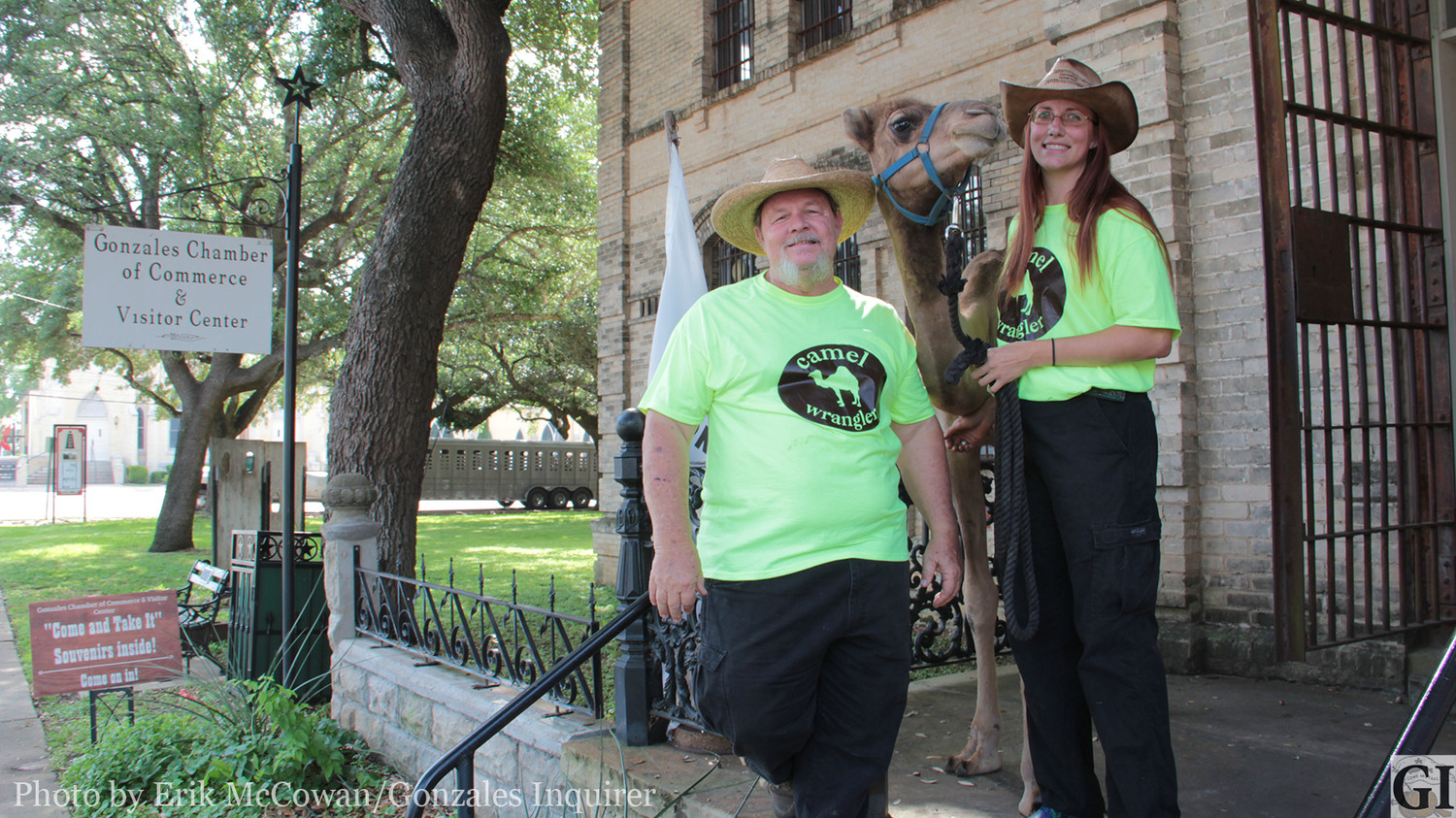Cost camel comes to town
The Cost camel came to town last week, stopping by the Gonzales Chamber of Commerce building to announce to the world — through a series of grunts — that there's now reason to make Hump Day a citywide holiday.
A dog may be a man's best friend, but this camel is the prime partner-in-crime to owner Valmon Mead of Camels and Critters, a new petting zoo operation in town.
“He's a big baby,” said Mead. “He's just over a year old, and he thinks that he is 'it.' He talks to us all the time but I'm not sure if he's agreeing or disagreeing. He thinks he should be the center of attention.”
To bring you up to speed, there are two types of camel: dromedary and bactrian. Camels are native to the Middle East and the Horn of Africa to Central Asia and were once found in the western North America prior to human migration to the continent. And those famous humps? They are not for storing water, but rather fatty deposits that minimize insulation that helps the ungulates survive in hot climes.
This camel is a dromedary, and his name is Mr. Humphrey. Mead purchased him from a petting zoo in Texarkana, where he was born March 12, 2017. Mr. Humphrey has a larger friend at home, another camel named Abraham.
“I've always wanted a camel,” Mead said. “I've had draft horses for many years, but I wanted something different. So we wanted to have a team of camels to drive, to do parades and things like that. I bought him to start learning about camels.”
Mead and partner Jessica Daniel are serious about this camel business. They even plan to attend a “camel symposium” in October to learn more about the beasts.
“There are a few camel professionals in the U.S.,” noted Daniel, now a budding cameleer. “Originally the Army brought them here to help settle western Texas. They did the same in Australia, and they turned them loose when they didn't need them anymore thinking that they'd die, but they're running wild all over Australia now.”
Additionally, camels are used as pack animals overseas, as you might have commonly seen. They are also eaten for food in some areas, and female camels are becoming prized for their milk production, making them more valuable, Mead explained.
One challenge of having a Texan camel is finding a veterinarian that will agree to care for the beast. Another issue is providing proper housing.
“The other problem is the barn, where you have to have a big stall for a camel,” Daniel said. “We had to cut a big hole in our barn. The opening was too low for the hump on Abraham. And you have to have a really big trailer to put a camel in it.”
Their petting zoo is USDA certified, and keeping to its name, has a host of critters. You will find goats, donkeys, sheep, a llama, and a yak is expected to be aded to the farm soon. The duo plan to bring their lot to the city on June 1 as part of the Main Street Concert Series kickoff. Daniel says that from 5-6 p.m., the zoo will be free and they will have cake to celebrate the occasion.
“I love seeing kids have a good time, and this is one way of doing it,” Mead said.
Comments







